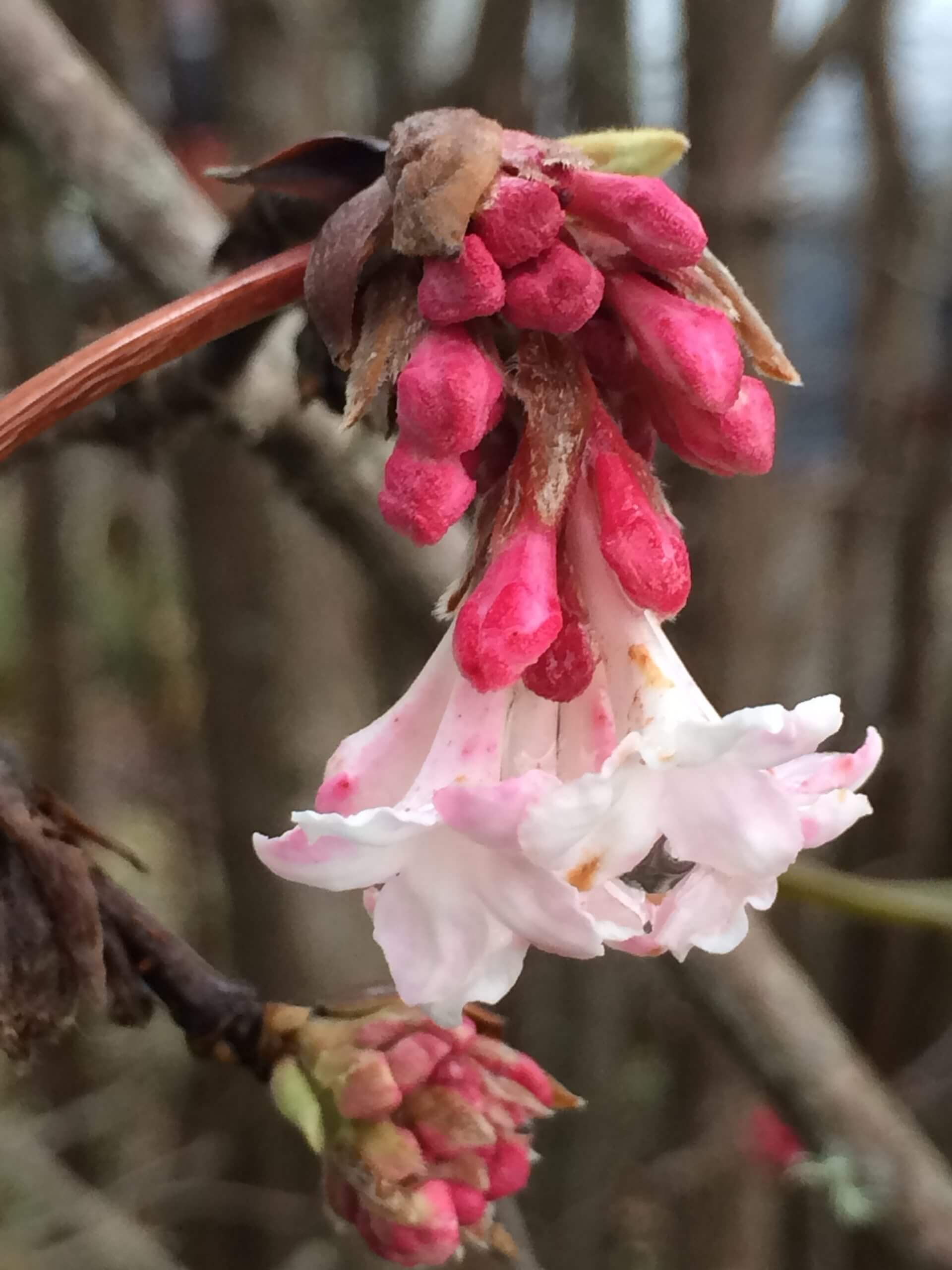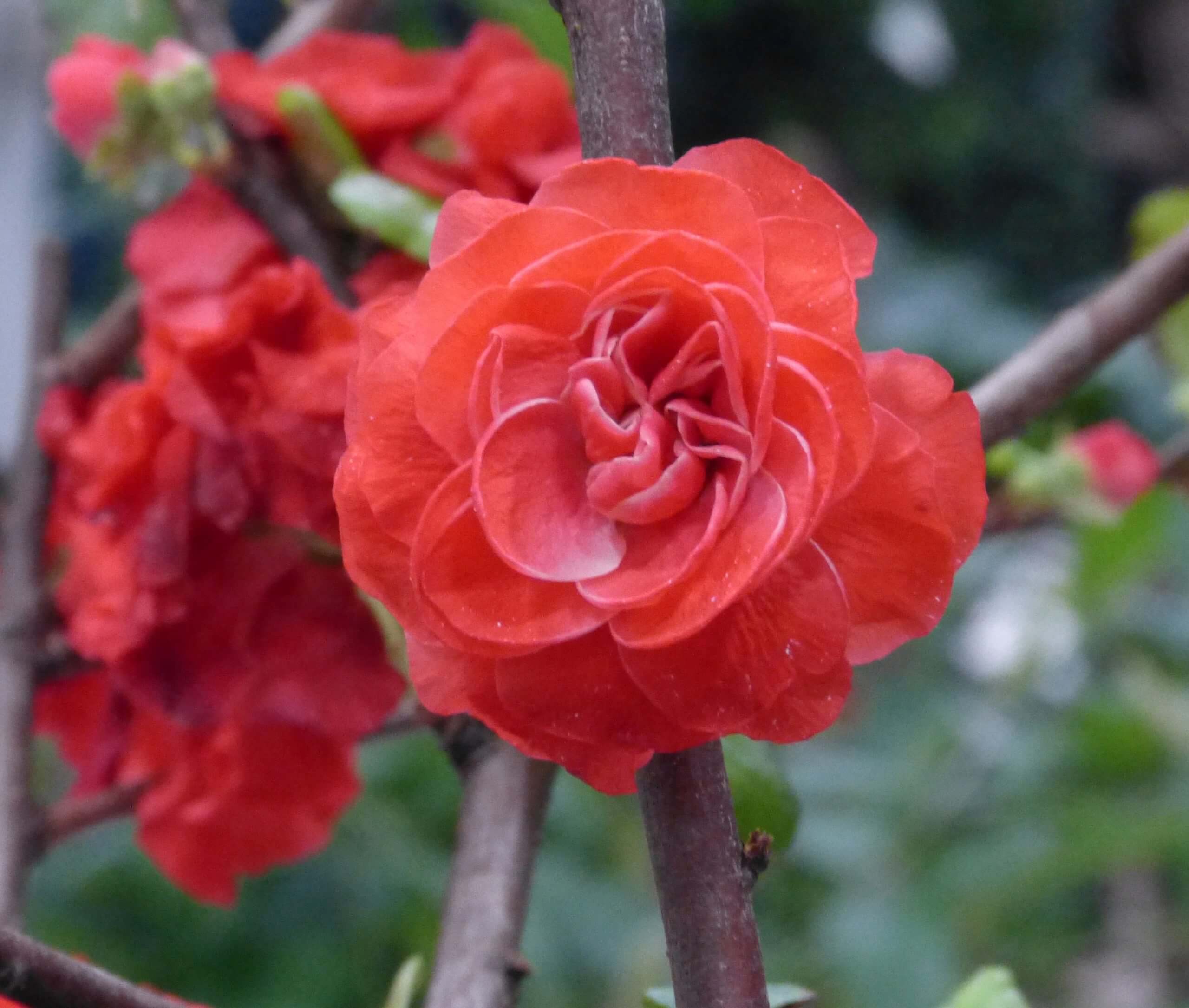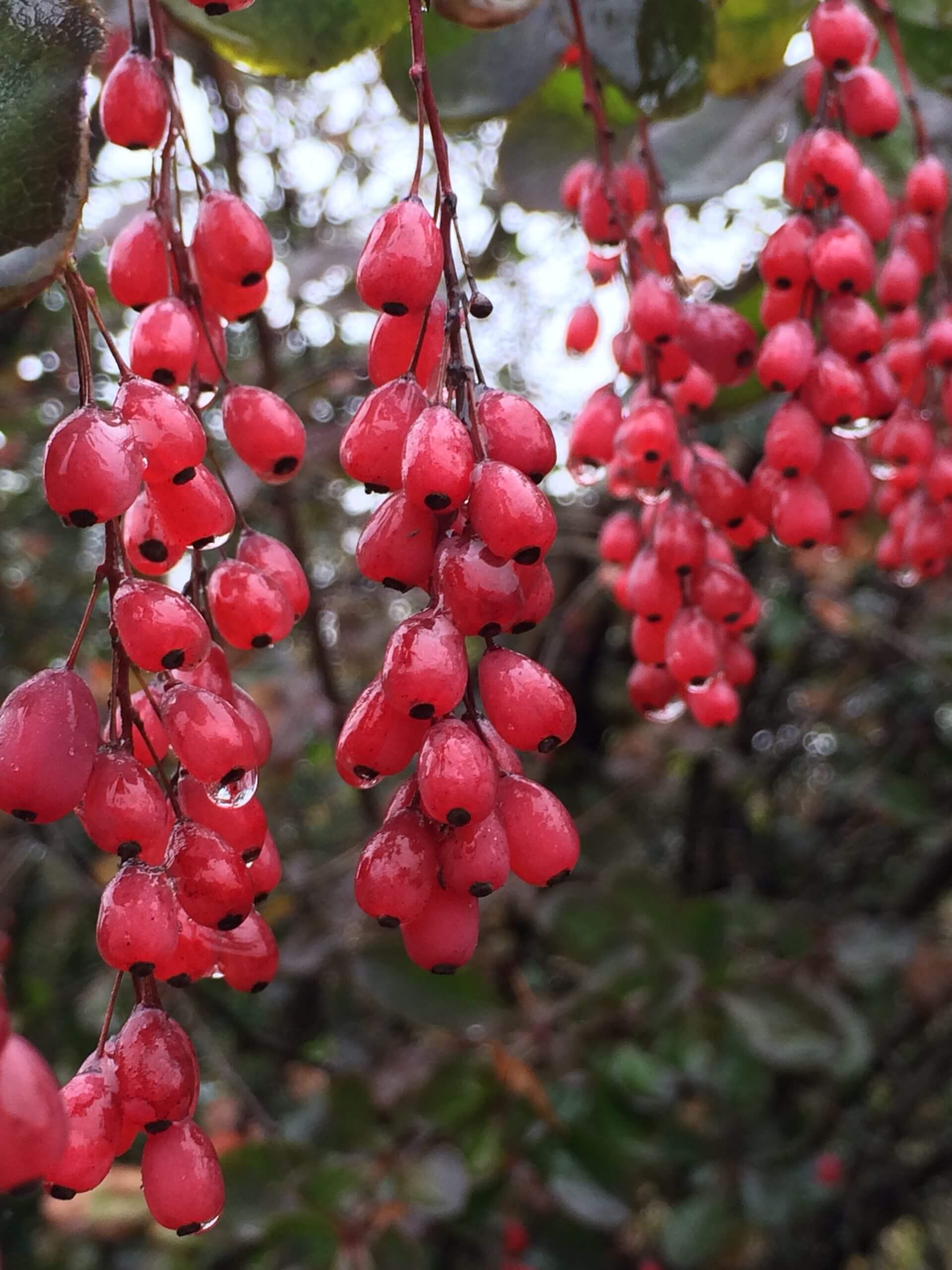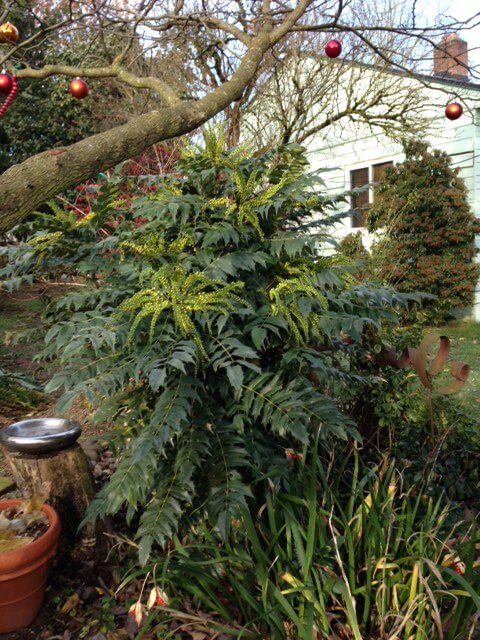
Recently a friend asked me what my garden looks like during the winter months. I replied that it is “rather bleak”. After thinking about my reply, I decided to take a closer look at my own garden and those around my neighborhood. I am glad that I did because my garden is not as bleak as I thought. This is the time of year when we are not working in our gardens and probably not even walking through them, and so it is easy to forget about some of the winter flowering plants and color they hold.

Viburnum
One of my favorite winter blooming shrubs is Viburnum x bodnantense ‘Dawn’, as it never fails to disappoint. This is a deciduous viburnum and is an easy-care, low-maintenance shrub. In my garden, I have three plants in a grouping at the back of a flower bed. The plants are perhaps ten years old and have reached heights of 12 feet, and to keep them on a smaller scale, I regularly prune them. The primary attribute of this plant is that in the winter, loose clusters of pink fragrant flowers appear and continue for several months. The stems with flower buds can be cut and brought indoors and will open, thus providing color and a light fragrance.
Flowering Quince
There are many flowering quince shrubs available, but one that caught my eye at a trade show last year was Chaenomeles speciosa ‘Orange Storm’. These shrubs are among the earliest to bloom in the spring and the budded stems can easily be brought indoors, put in a vase with water, and soon the flower buds will open. There are many different varieties of flowering quince, and they are generally regarded as very easy shrubs to grow. They have a reputation of being very thorny and getting quite large and are often not suited for a small garden. However, ‘Orange Storm’ is a smaller growing shrub reaching 3-4 feet in height and equally as wide, and it is thornless. Generally, flowering quince is regarded as being deer resistant.

Oregon Grape
A listing of winter-blooming plants for those living in the Pacific Northwest would not be complete without our native Mahonia aquifolium (Oregon grape). There are quite a few different forms to choose from regarding height. ‘Compacta’ only gets 2-3 feet tall whereas the species can reach 6-8 feet in height. Oregon grape is a very easy care plant for the garden with leaves that turn purplish or bronze in the winter, thus giving the plant some addition color. The winter highlight is the clusters of yellow flowers that appear at the top of the stems. Not only do these flowers provide some winter cheer in the garden, but they are hummingbird magnets. Oregon grape is a natural source of winter food for the Anna’s hummingbird, which does overwinter here.
Barberry
While not a flowering plant during the winter, there are many barberry plants that provide flower color in the spring and berry color in the winter. The growth habit of barberry plants is extremely diverse with some staying small, perhaps 3-4 feet, while others will reach upwards of 7-12 feet. They tend to be very thorny and this feature needs to be considered when planting in a home garden. They flower in the spring and then in the autumn and winter, there is often an abundance of beautiful berries. One of my favorites is Berberis jamesiana which has clusters of fuchsia pink berries. This is a tall type, reaching up to 12 feet, so it would only be appropriate in the back of a flower bed. It has yellow flowers in the spring. Barberries are very easy to grow and are deer resistant.

When I mentioned that my garden was “rather bleak”, I should have taken a closer look as it is offering much more than I thought. This is a wonderful time to visit gardens or local garden centers to check out what is showing color now. If there is an arboretum close by to visit, I would suggest taking a stroll through it as you may be quite surprised at what you will see.
As this year ends, I reflect back on my garden and others that I have visited. The garden provides so much in our busy lives and taking some time to relax and reflect on how fortunate we are is appropriate now and throughout the year. Enjoy your garden and best wishes for a very Happy New Year.

